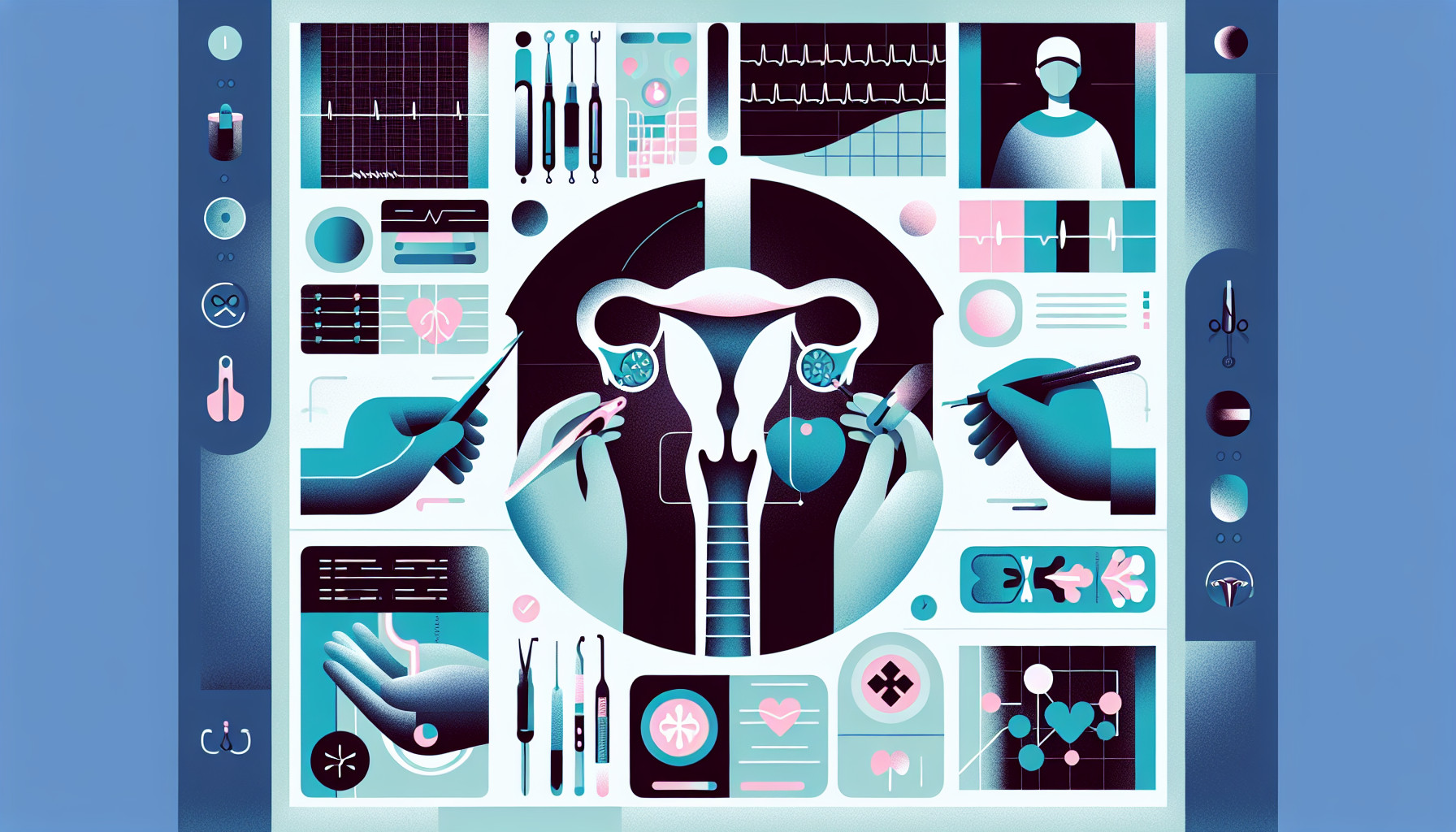Our Summary
This study is looking at a treatment for heavy menstrual bleeding called radiofrequency endometrial ablation (REA), which involves using radio waves to destroy the lining of the uterus. The researchers wanted to figure out how often this treatment fails, meaning the patient needs to have her uterus removed (a hysterectomy) afterwards. They looked at the medical records of women who had this treatment at a hospital in Canada between 2002 and 2019.
The study found that about 22.6% of all patients ended up needing a hysterectomy after having REA. The younger the patient was at the time of the REA, the more likely she was to need a hysterectomy later. For example, 36.1% of women under 30 needed a hysterectomy, compared to 17.6% of women over 40.
The researchers also found that women under 40 were more likely to need a hysterectomy if they had certain risk factors, like a history of tubal occlusion (blocked fallopian tubes), cesarean section, painful periods, or chronic pelvic pain. For women over 40, having fibroids (non-cancerous growths in the uterus) was a risk factor for needing a hysterectomy.
The study concludes that REA can be a good option for women between 30 and 39.9 years old who don’t have any of these risk factors. For younger women or women with risk factors, the decision to have REA should be made carefully, taking into account the reasons for their heavy bleeding and their personal preferences.
FAQs
- What is radiofrequency endometrial ablation (REA) and what does it treat?
- How often do women need a hysterectomy after undergoing REA, according to the study?
- What are some of the risk factors for needing a hysterectomy after REA, particularly for women under 40 and over 40?
Doctor’s Tip
A helpful tip a doctor might give to a patient considering endometrial ablation is to discuss their age, medical history, and any risk factors with their healthcare provider before undergoing the procedure. It is important for patients to understand the potential risks and benefits of the treatment and to make an informed decision based on their individual circumstances. Additionally, patients should follow up with their healthcare provider regularly after the procedure to monitor their symptoms and discuss any concerns.
Suitable For
Patients who are typically recommended for endometrial ablation are those who have heavy menstrual bleeding (menorrhagia) that has not improved with other treatments such as medication or hormonal therapy. Endometrial ablation is often considered for women who have completed their childbearing and do not wish to have more children, as the procedure can affect fertility.
Specifically, women who are recommended for endometrial ablation may have the following characteristics:
- Heavy menstrual bleeding that significantly impacts their quality of life
- Have not responded to other treatments for menorrhagia
- Have completed their childbearing and do not wish to have more children
- Have a normal uterine cavity without any abnormalities such as fibroids or polyps
- Are in good overall health and do not have certain medical conditions that may contraindicate the procedure
It is important for patients considering endometrial ablation to discuss their options with their healthcare provider, who can help determine if they are a suitable candidate for the procedure based on their individual circumstances and medical history.
Timeline
Before endometrial ablation:
- Patient experiences heavy menstrual bleeding
- Patient may have tried other treatments such as medication or hormonal therapy
- Patient consults with a healthcare provider to discuss treatment options
- Patient undergoes a thorough evaluation to determine if endometrial ablation is a suitable option
After endometrial ablation:
- Patient undergoes the REA procedure, which involves using radio waves to destroy the lining of the uterus
- Patient may experience some cramping and discomfort following the procedure
- Patient is monitored for any complications or side effects
- Patient may experience lighter periods or no periods at all after the procedure
- Patient follows up with their healthcare provider for any additional treatment or follow-up care needed
In some cases, if the endometrial ablation is not successful or if the patient develops complications, they may need to undergo a hysterectomy as a last resort treatment option. The decision to have a hysterectomy after endometrial ablation is based on individual factors such as age, risk factors, and the reasons for the heavy bleeding.
What to Ask Your Doctor
- What is endometrial ablation and how does it work?
- What are the potential risks and complications associated with endometrial ablation?
- How effective is endometrial ablation in reducing or stopping heavy menstrual bleeding?
- Are there any specific criteria or risk factors that would make me a good candidate for endometrial ablation?
- What is the likelihood that I may need a hysterectomy after undergoing endometrial ablation?
- Are there any alternative treatments for heavy menstrual bleeding that I should consider?
- What is the recovery process like after endometrial ablation?
- Will endometrial ablation affect my fertility or ability to have children in the future?
- How long does the effect of endometrial ablation typically last?
- Are there any long-term considerations or follow-up appointments I should be aware of after having endometrial ablation?
Reference
Authors: Emslie E, Mui J, Sullivan MB, Karreman E, Buitenhuis D, Berscheid K, Rattray D. Journal: J Minim Invasive Gynecol. 2023 Nov;30(11):905-911. doi: 10.1016/j.jmig.2023.07.002. Epub 2023 Jul 13. PMID: 37451502
